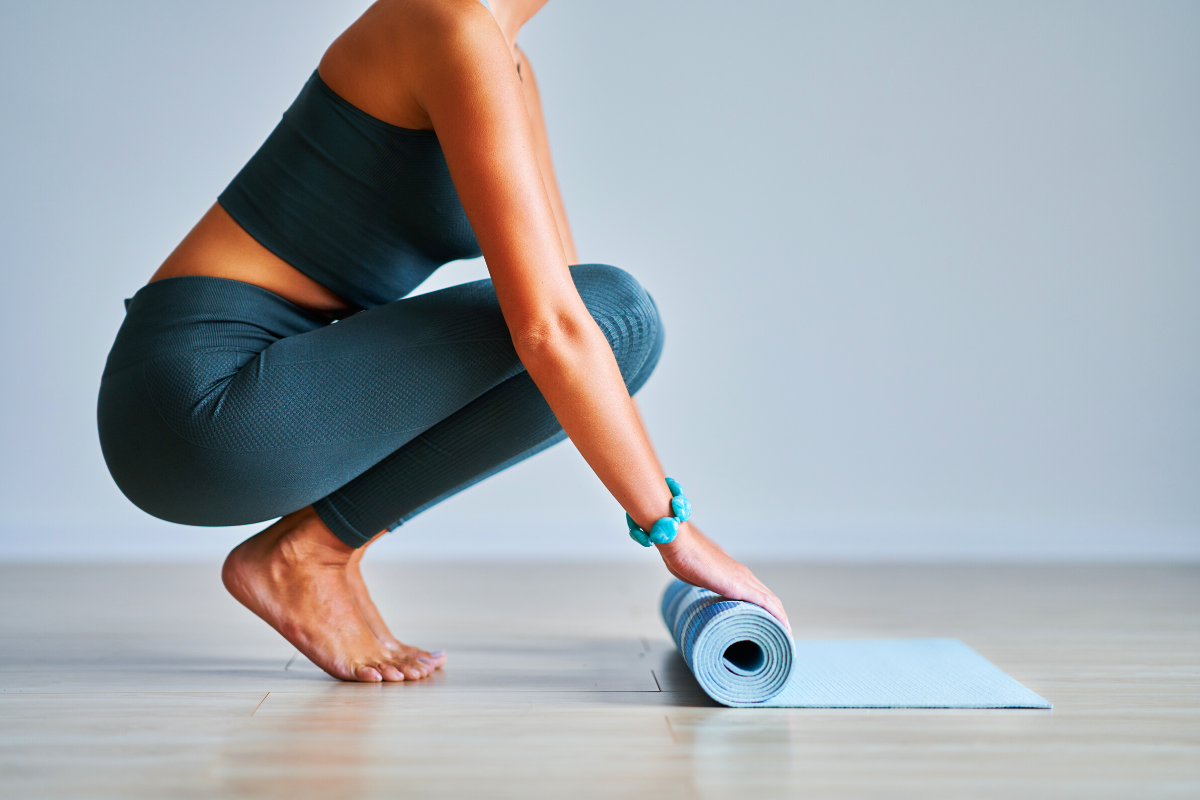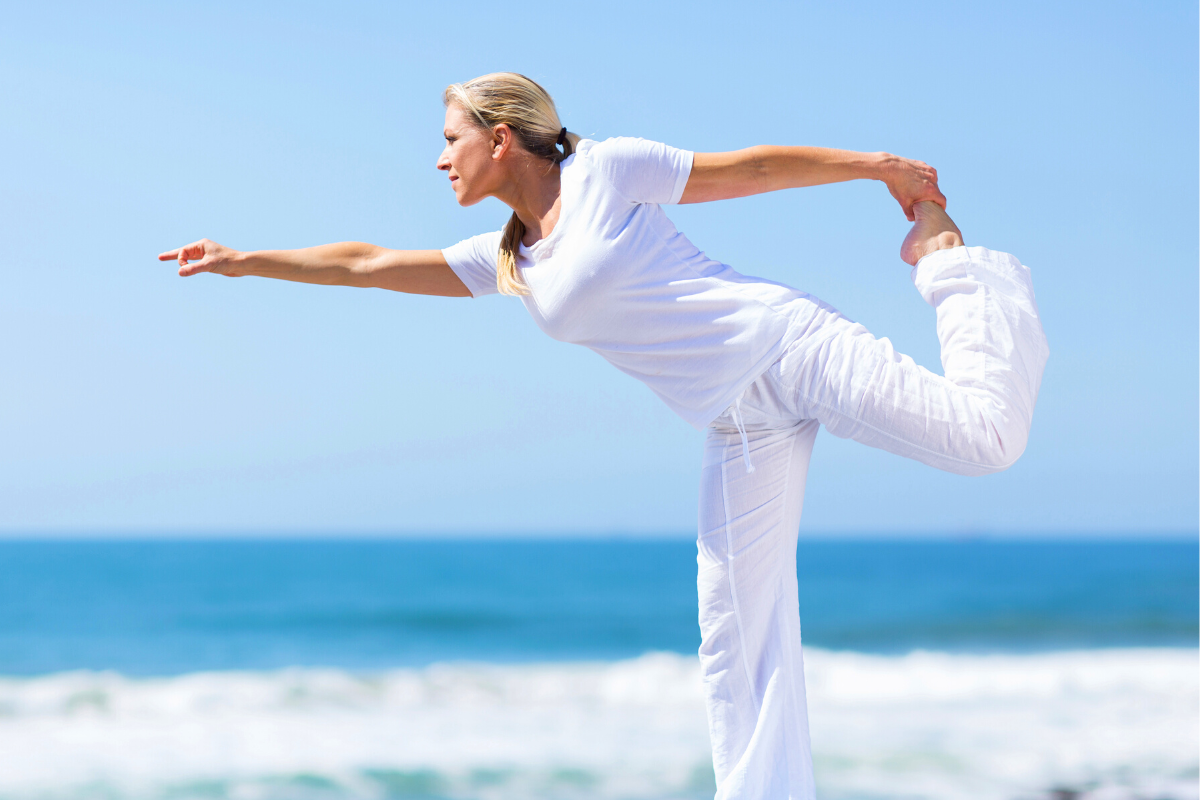Strong to the Core – Benefits of Pilates During Menopause

Pilates has been around for nearly 100 years. The exercise routine’s popularity has been up and down, but it endures largely because it’s highly effective, suitable for just about everyone at any age, from beginners to the highly fit, complements other more intense fitness routines, and has a stress-reducing mind-body connection. All good things for women in the menopause life stage.
A Pilates workout is low impact with the primary goals of strengthening muscles, improving flexibility, and developing endurance. Its main focus is the core, with reliance on using breathing, control, and concentration while going through the Pilates exercises.
Your core muscles are the muscles deep within the abdominals and back, attaching to the spine or pelvis. Developing a strong core becomes even more critical as you get older. Why? A strong core will help with posture and movement, decreasing back and muscle pain. And if you are going through menopause, all the more reason to strengthen your core and your entire body.
Can Pilates Ease Menopause Symptoms?
Estrogen levels drop during menopause, which means your bones and muscles begin to weaken, which can put you at a greater risk of falling. Because Pilates is a full-body workout, you can expect to gain back strength, balance, and coordination.
Pilates may also relieve common menopause symptoms like hot flashes, weight gain, mood swings, and brain fog. One study found that an eight-week Pilates program is effective in decreasing menopause symptoms and increasing back strength and flexibility. Another study found that after six weeks, participants benefited from an improvement in muscle strength, reduction in stress, and improved quality of life.
Pilates can also prevent urinary problems by helping to strengthen your pelvic muscles.
Probably the most crucial benefit for menopausal women is that Pilates can stimulate hormone production because it’s also a great way to reduce stress. Less stress means less cortisol which can intervene with estrogen and progesterone production.
What Pilates Doesn’t Help With
- Weight Loss: While core exercises will not necessarily help you lose weight or belly fat, they will make the muscles in your midsection stronger, and a stronger core means better posture, greater strength, and an increase in self-confidence. A study involving postmenopausal women found that after 12 weeks, the participants increased abdominal, upper, and lower limb strength, but no changes in body composition were detected.
- Cardiovascular Fitness: Pilates is not a cardiovascular workout like walking, running, or bike riding. You can amp up the intensity of your Pilates workout. However, it won’t achieve the same cardiovascular benefits.
- Strength Training: While you do strengthen muscles with Pilates, it’s not the same as lifting weights, so you won’t build as much muscle. Don’t neglect strength training as it’s crucial to maintaining and building bone density.
Pilates is best paired with a healthy diet and a well-rounded fitness program that includes cardio and strength training exercises.

Getting Started
Most health clubs offer mat Pilates classes, and some studios specialize in Pilates using machines. If you want to practice at home, YouTube has a good selection of free videos.
How many sessions do you need? You can see results from one to two sessions per week over 6-12 weeks, and three times per week is ideal.
If you have musculoskeletal issues, seek out a Pilates trainer who can provide a 1:1 or small group consultation. In a large class setting, let your instructor know so you can get individual cues on what not to do. Don’t perform moves that cause or exacerbate pain.
Best Exercises To Fire Up Your Core
If you want to skip the class and incorporate a few Pilates exercises into your existing routine, several options can help you strengthen your core and improve your balance. Here are six great exercises you can start with:
- Planks: A plank is an isometric exercise. Assume a push-up position on your hands and toes. You can hold a plank either on your hands or forearms. Try to work up to a one-minute hold for 2-3 sets.
- Side Planks: Another isometric exercise that can also be performed on your hands or forearms. These are a little tougher than a regular plank, but they really target those oblique muscles.
- Bird dog: This exercise works on lengthening the spine and strengthening your glutes and spinal stabilizers. Assume a tabletop position on your hands and knees. With your head in a neutral position and abs engaged, extend your right arm out in front of you, then slowly extend your left leg. Hold the position for a few seconds and then slowly switch to the left arm and right leg. Switch back and forth until you complete five reps on each side or 10 total. Work up to three sets of 10.
- Dead bugs: Don’t let the name turn you off. Your lower abs and pelvic floor will benefit the most from this unusually sounding but highly effective exercise. The dead bug is the reverse of the bird dog in that you lie on your back and extend your arms in the air and bring your knees and legs up to form an upside-down L position. With a neutral spine and abs engaged, slowly lower your right arm and right leg. Stop just before you touch the ground and slowly return to your original position. Change to the left side. Switch back and forth until you complete five reps on each side or ten total.
- Hollow holds: This isometric exercise looks easier than it really is. Lie flat on the ground with your legs out and your arms overhead. With your lower back on the floor and abs tight, slowly raise your legs 2-3 inches and shoulders off the ground. Hold for 15-30 seconds and slowly return to the lie flat position. It can feel like an eternity, and you’ll feel it in your core almost instantly. Start with three reps.
- Russian twists: This exercise targets your oblique muscles in a leaning, seated position while you twist side to side. You can use a hand weight and/or lift your feet off the ground if you want to make it more challenging.
Check your form if you feel any strain in your back or neck. Your neck should always be in a neutral position (no tucked-in chins). With dead bugs and hollow holds, your lower back should always be pressed into the floor with absolutely no arching. But if doing these exercises still presents a problem, and you are experiencing pain, you can modify the exercise or avoid it altogether. The last thing you want to do is hurt yourself.
If you already have a workout routine, incorporating Pilates is a great idea to round out your program and incorporate more core and balance work. And if you are not already in a routine, Pilates is a good place to start. The slow pace and low-impact style are perfect for everyone—especially for women looking to manage symptoms that accompany menopause and the effects of aging.
For access to more education and support to help you get and stay fit in midlife, download Midday from the App Store or visit us at Midday.Health
Ilyse Rogozenski has been an AFAA-certified fitness instructor for more than nineteen years. She specializes in conditioning classes that combine both cardiovascular and strength exercises. Ilyse has worked with all age groups and fitness levels and believes that fitness should be challenging but fun. She helps women stay consistent with their fitness programs while also creating a sense of community in all of her classes.
Sign up for more unique women’s health content
By submitting this form, you agree to the Lisa Health Privacy Policy and Terms of Use

